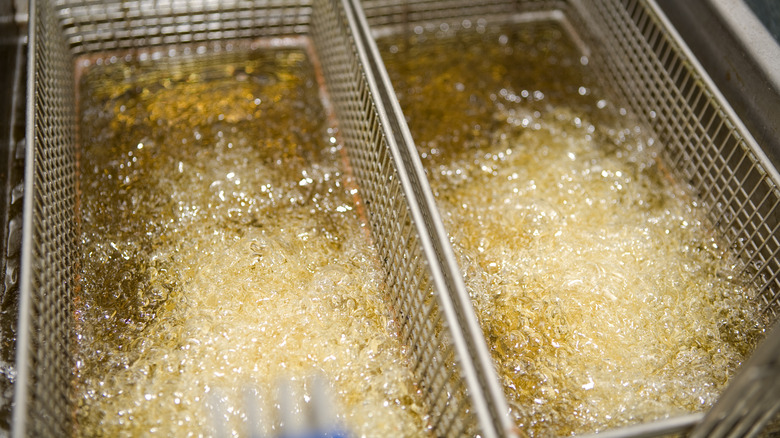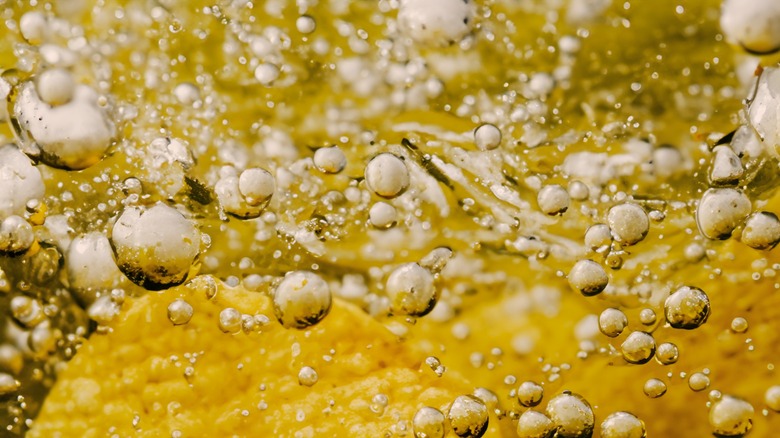The Spoon Trick For Testing Whether Frying Oil Is Ready
The key to frying the right way is knowing when the oil is ready before you drop the food into the pot so you don't end up with soggy, undercooked food. But how do you know if the oil is ready before frying up a batch of chicken, fish, or hush puppies? There are a few ways to check in on that oil, the most obvious of which is using a candy thermometer. Typically, a temperature between 350 and 375 degrees Fahrenheit is the range you want your oil to reach. Don't have one in your kitchen? A simple, wooden spoon will also do the trick.
How do you use a wooden spoon to check on your oil? Place the handle of the spoon into the oil. Do you see a moderate amount of bubbles? Then it's ready to go! If you don't see any bubbles, or there are just a couple of small ones, the oil needs more time to heat up. And if you see a lot of bubbles, your oil is probably too hot, and you should turn down the temperature and wait for it to cool down for a few minutes. A wooden chopstick will also work in the same way for this kitchen hack. Remember that the oil's temperature will fluctuate, so check on it as you fry each batch.
Checking when frying oil is ready
A perk to using a wooden spoon in the kitchen is that it withstands high temperatures, so don't worry about damaging your products when you're checking the temperature of the oil. Obviously don't keep it in there for too long, or leave the spoon in the pot while you wait for the oil to heat up because it might burn. Luckily, this trick only takes a few seconds.
If you don't have a wooden spoon or the right kind of thermometer, there are other ways to test the oil before you fry it. First, you can use a little bit of flour by dropping a few specks into the oil and watching for bubbles. If there are a significant amount of bubbles and the oil doesn't start popping too much (stand back just in case), it's time to fry. And a final word of advice about testing oil temperature: Dropping a little water into the pot is a long-time method, but it's not the safest option because oil and water don't mix so don't go this route if you can avoid it.

